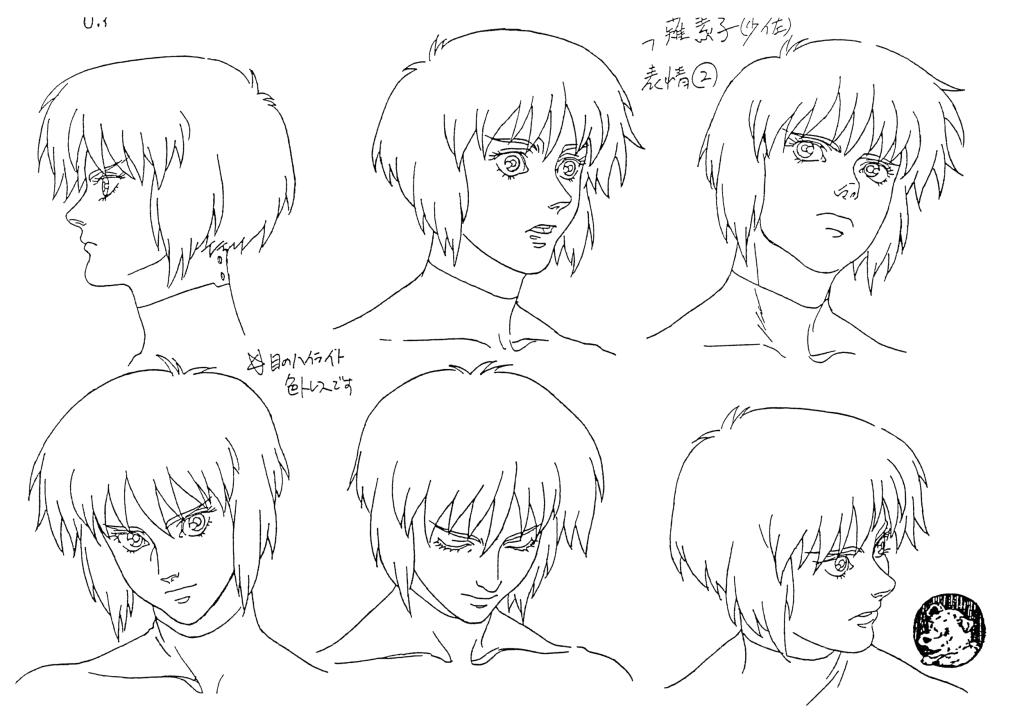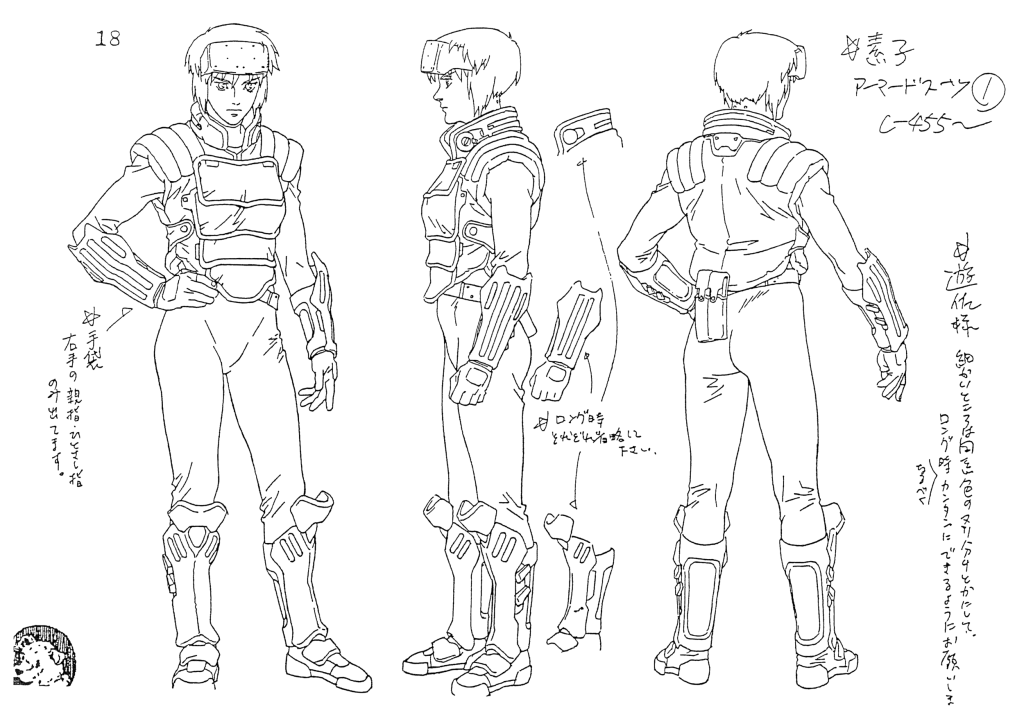Exploring the Concept Art of Ghost in the Shell 1995
Greetings, Art Enthusiast! Today, we delve into the captivating world of Ghost in the Shell 1995 concept art. This groundbreaking anime film, directed by Mamoru Oshii, is renowned for its stunning visuals and thought-provoking themes. In this article, we will uncover the beauty and intricacy of the concept art that brought this cyberpunk masterpiece to life.
Introduction
Ghost in the Shell 1995, based on the manga of the same name by Masamune Shirow, takes place in a dystopian future where humans can integrate their consciousness with advanced technology. The concept art plays a crucial role in realizing the film’s immersive cyberpunk universe. It captures the essence of this futuristic society, showcasing the striking visuals and detailed environments that transport viewers into an alternate reality.
Let us now explore the various aspects of the Ghost in the Shell 1995 concept art, from the characters and their design to the locations and themes portrayed.
What: Unveiling the World of Ghost in the Shell 1995
The concept art of Ghost in the Shell 1995 offers a glimpse into a world where humans and machines coexist, blurring the boundaries between reality and technology. The artwork presents a fusion of cybernetic enhancements, sprawling cityscapes, and intricate machinery. Each frame is meticulously crafted to convey the futuristic atmosphere and intricate details envisioned by the artists.

Image Source: squarespace-cdn.com
🎨 The concept art showcases the technological advancements, including prosthetic bodies, interconnected networks, and cybernetic enhancements, driving the narrative behind the film. It highlights the intricate design of the human-machine interface, capturing the transhumanist essence of Ghost in the Shell 1995.
The Characters and their Design
The concept art brings the characters of Ghost in the Shell 1995 to life, showcasing their unique personalities and augmentations. It depicts the protagonists, Major Motoko Kusanagi and Batou, with their cybernetic bodies and advanced weaponry. The detailed illustrations highlight the futuristic attire, intricate facial expressions, and body modifications, giving each character a distinct identity.
🖌️ The concept art captures the essence of the characters, blending human features with technological enhancements seamlessly. It showcases the balance between humanity and machinery, a central theme in the movie.
The Locations and Environments
Ghost in the Shell 1995 concept art mesmerizes with its breathtaking portrayals of urban landscapes, both vibrant and dystopian. From towering skyscrapers and neon-lit streets to dark alleyways and hidden laboratories, the artwork immerses viewers in a world teeming with life and technology.

Image Source: squarespace-cdn.com
🌆 The concept art paints a vivid picture of the metropolis, emphasizing the contrast between the advanced technology and the decaying cityscape. It showcases the attention to detail, from the bustling crowds to the intricate architecture, creating a rich and believable environment.
Who: The Visionary Artists Behind the Concept Art
The Ghost in the Shell 1995 concept art is the result of a collaboration between talented artists, designers, and animators. The team included renowned figures such as Hiroyuki Okiura, Takashi Watabe, and Yutaka Izubuchi. Together, they brought Masamune Shirow’s vision to life, visualizing his cyberpunk universe with remarkable precision.
🎭 The concept art reflects the unique artistic styles of each contributor, seamlessly blending their visions into a cohesive and visually striking whole. It showcases their ability to capture the essence of Shirow’s universe and translate it into breathtaking artwork.
When: The Creation of Ghost in the Shell 1995 Concept Art
The concept art for Ghost in the Shell 1995 was created during the production of the film, which started in the early 1990s. The artists worked closely with the director, Mamoru Oshii, to ensure the visuals aligned with the film’s narrative and themes. Their creative process involved extensive research, sketching, and refining to bring the cyberpunk world to life.

Image Source: squarespace-cdn.com
📅 The concept art serves as a testament to the dedication and meticulousness of the artists, as they meticulously crafted every detail to ensure the visual coherence of the film.
Where: The Influence of Setting on the Concept Art
The setting of Ghost in the Shell 1995 heavily influenced the concept art. The film takes place in a futuristic version of Japan, where technology has become an integral part of society. The artists drew inspiration from Tokyo’s urban landscape and architecture, incorporating elements of the city into their artwork.
🗺️ The concept art showcases the fusion of traditional Japanese aesthetics with futuristic elements, resulting in a visually stunning and culturally rich world. It transports viewers to a unique blend of past, present, and future.
Why: The Significance of Ghost in the Shell 1995 Concept Art
The concept art of Ghost in the Shell 1995 holds immense significance in the world of animation and cyberpunk storytelling. It not only influenced the visual style of the film but also inspired countless artists and filmmakers, leaving an indelible mark on the genre.
🌟 The concept art pushed the boundaries of animation, showcasing its potential to create immersive and thought-provoking worlds. It demonstrated the power of visual storytelling, captivating audiences with its intricate details and evocative imagery.
How: Bringing Ghost in the Shell 1995 to Life Through Concept Art
The concept art played a crucial role in shaping the visuals of Ghost in the Shell 1995. The artists’ sketches, storyboards, and digital renderings provided a blueprint for the animators, ensuring consistency and coherence throughout the film. Each frame was carefully crafted to evoke the desired emotions and immerse the audience in the cyberpunk universe.
⚙️ The concept art acted as a bridge between the director’s vision and the final product, guiding the animation team in realizing the film’s aesthetic and thematic goals.
Pros and Cons: Evaluating the Impact of Ghost in the Shell 1995 Concept Art
1. Pros: The concept art of Ghost in the Shell 1995 revolutionized the anime industry, setting new standards for visual storytelling and world-building. Its intricate designs and attention to detail mesmerized audiences and inspired future artists.
2. Cons: Some critics argue that the stunning visuals of Ghost in the Shell 1995 overshadowed the narrative, leading to a disjointed viewing experience for certain viewers.
💡 Regardless of the criticism, the concept art undeniably played a pivotal role in establishing Ghost in the Shell 1995 as a groundbreaking anime film.
FAQs
1. How did the concept art influence the character design in Ghost in the Shell 1995?
The concept art provided a visual foundation for the character design, ensuring that each character’s appearance aligned with the film’s cyberpunk aesthetic. It helped create distinct personalities and unique augmentations for the protagonists.
2. Were there any significant differences between the concept art and the final animation?
While the concept art laid the groundwork for the final animation, some artistic liberties were taken during the production process. The animators built upon the concept art, adding movement, lighting, and additional details to enhance the overall visual experience.
3. How did the concept art contribute to the world-building in Ghost in the Shell 1995?
The concept art established the visual language of the film’s universe, showcasing the cybernetic enhancements, cityscapes, and technological advancements. It played a vital role in immersing viewers in the dystopian future, making the world feel vibrant, believable, and cohesive.
4. Which artists had the most significant impact on the concept art of Ghost in the Shell 1995?
Hiroyuki Okiura, Takashi Watabe, and Yutaka Izubuchi were among the key artists whose contributions shaped the concept art of Ghost in the Shell 1995. Their unique styles and attention to detail brought the cyberpunk world to life.
5. How has the concept art of Ghost in the Shell 1995 influenced other works in the cyberpunk genre?
The concept art of Ghost in the Shell 1995 has had a profound impact on the cyberpunk genre, inspiring numerous artists, filmmakers, and storytellers. Its blend of futuristic technology, intricate cityscapes, and human-machine integration has become a reference point for many works exploring similar themes.
Conclusion: Embracing the Cyberpunk Aesthetic
The concept art of Ghost in the Shell 1995 remains an iconic representation of cyberpunk aesthetics in animation. Its immersive visuals, intricate character designs, and detailed environments have captivated audiences for decades. As we delve into the world of Ghost in the Shell 1995 through concept art, we appreciate the remarkable creativity and vision behind this cyberpunk masterpiece.
Final Remarks: Exploring Art in the Digital Age
Ghost in the Shell 1995 concept art exemplifies the power of art to transcend boundaries and immerse viewers in fantastical worlds. It reflects the symbiotic relationship between technology and creativity, reminding us of the limitless possibilities that lie ahead. As we continue to embrace the digital age, let us celebrate the artists who push the boundaries of imagination and bring their visions to life through concept art.